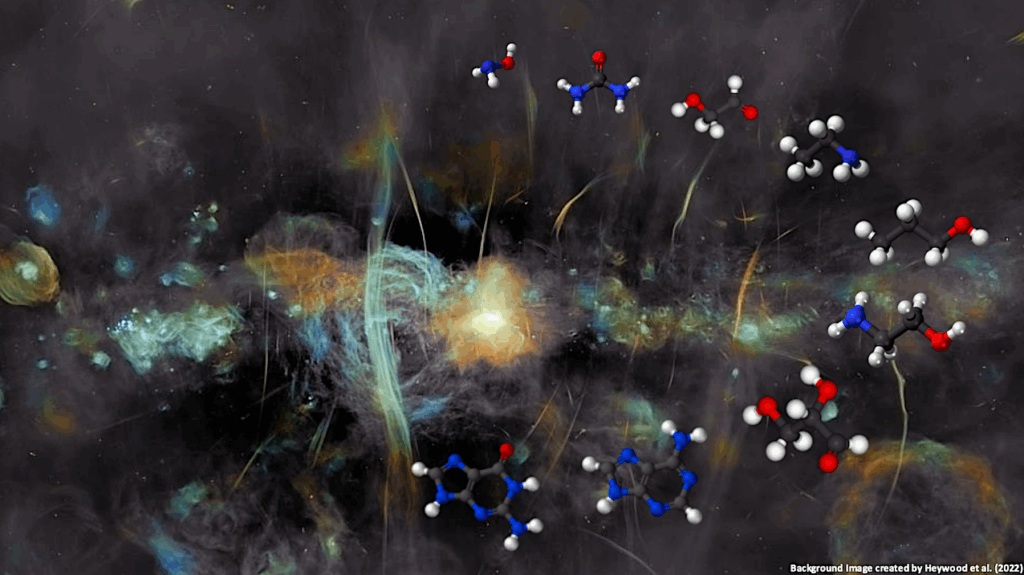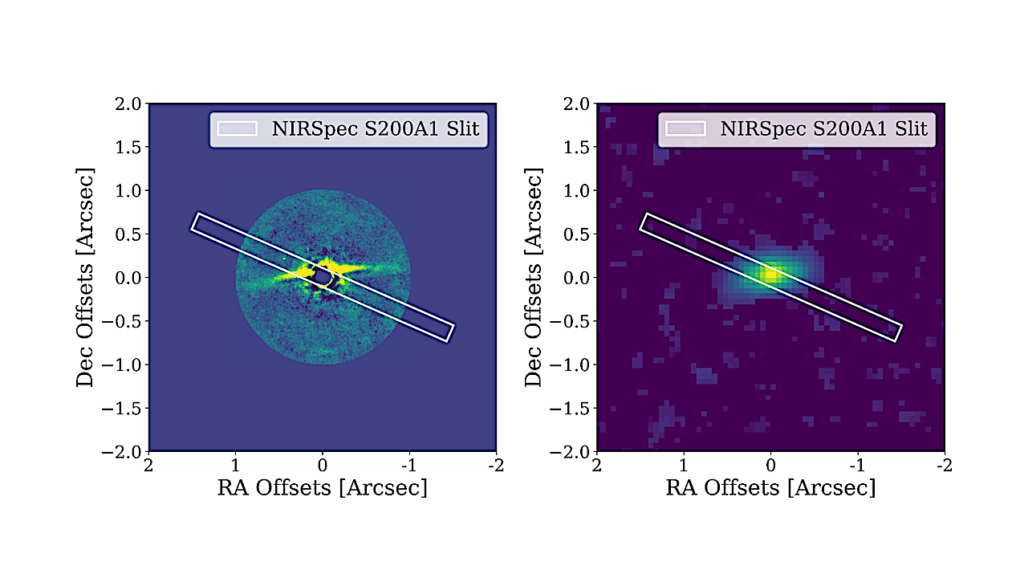How Were Amino Acids Formed Before The Origin Of Life On Earth?

Our solar system formed from a molecular cloud, which was composed of gas and dust that was emitted into the interstellar medium (ISM), a vast space between stars. On collapse of the molecular cloud, the early sun was formed, with a large disk of gas and dust orbiting it. The dusty material collided to produce rocky material that would eventually grow in size to give large bodies called planetesimals.
Our solar system formed from a molecular cloud, which was composed of gas and dust that was emitted into the interstellar medium (ISM), a vast space between stars. On collapse of the molecular cloud, the early sun was formed, with a large disk of gas and dust orbiting it. The dusty material collided to produce rocky material that would eventually grow in size to give large bodies called planetesimals.
The planetesimals that formed far enough from the sun, also contained large quantities of ice. The ice consisted of water and other volatile compounds, such as carbon monoxide (CO), carbon dioxide (CO2), methanol (CH3OH) and ammonia (NH3), as well as many other organic compounds, likely including some amino acids. Eventually, the ice melted due to the presence of radioactive material that heated up the bodies. This period of liquid water (termed aqueous alteration) enabled many reactions to occur, including Strecker synthesis and Formose-like reactions, the result being the production of new organic material, including amino acids (Figure 2). The same process also changed the rocky materials from their original minerals to new secondary minerals, such as phyllosilicates, carbonates, Fe-oxides and Fe-sulfides (Figure 1).

After several millions of years, the planetesimals began to freeze, as the radioactive material was used up. Later catastrophic collisions and interaction with the solar systems planets broke up the large bodies and sent their asteroidal and cometary fragments close to Earth. Further impact events have since delivered fragments of these asteroids and comets to the Earth’s surface, supplying the Earth with large quantities of organic material, including amino acids, over the course of its history.
Amino acids are within all living things on Earth, being the building blocks of proteins. Proteins are essential for many processes within living organisms, including catalysing reactions (enzymes), replicating genetic material (ribosomes), transporting molecules (transport proteins) and providing a structure to cells and organisms (e.g. collagen). Therefore, amino acids would have been needed in significant amounts within the region where life began on Earth.
Previous work has identified a number of possible settings both on the Early Earth and in extraterrestrial environments that can form amino acids. Interestingly, most amino acids come in at least two forms, whose structures represent mirror images of each other, similar to human hands. Accordingly, these are often referred to as the right-handed or left-handed optical isomers.
One interesting characteristic of life on Earth is that it uses one particular type of amino acids in its proteins, the left-handed optical isomer. Currently, only a certain class of meteorites (carbonaceous chondrites) are known to contain excesses of left-handed optical isomers, which has led to the idea that the amino acids used by life may have originated from these meteorites. Despite this, the amino acids in meteorites could have formed before their incorporation into the meteorites or after the meteorites had already formed.

Here, a team of scientists analysed several fragments of the asteroid Ryugu and calculated the abundance of amino acids within them. The abundance of the mineral phases within the particles had been previously reported in another publication, which allowed for a comparison between the abundance of amino acids and minerals. It was found that one particle (A0022) contained a high abundance of an amino acid that is uncommon in extraterrestrial materials, called dimethylglycine (DMG), whereas the other particle (C0008) did not contain this amino acid above detection limit (Figure 3).
Meanwhile, the abundance of the amino acid glycine was found to be lower in A0022 compared to C0008, while the abundance of β-Alanine showed the opposite trend. Accordingly, the ratio of β-Alanine to glycine was higher for A0022 than for C0008. This ratio was shown previously to be indicative of the extent of aqueous alteration operating on planetesimals. Accordingly, it was hypothesised that some reaction related to higher levels of aqueous alteration in A0022 may explain the high abundance of DMG in this particle, compared to C0008.
As such, the mineral phases were examined to see if any additional evidence for what reaction may be causing the different amino acids abundances between the Ryugu particles. It was found that the abundance of secondary minerals (formed after aqueous alteration), including carbonate, magnetite and Fe-sulfides, was higher in A0022 than in C0008 (Figure 4). In particular, the high abundance of carbonate pointed towards a larger quantity of CO or CO2 within the region of the planetesimal where A0022 had been altered, compared to C0008. In conjunction with the evidence for more intense aqueous alteration from the β-Alanine to glycine ratio, this indicated that more ice in general may have been present in the precursor of A0022 than in C0008 (Figure 4).

One way to commercially produce DMG, an important nutrient for humans, is the through the Eschweiler–Clarke reaction. This reaction requires the interaction of glycine with formic acid and formaldehyde in water and also produces CO2. Glycine, formaldehyde and formic acid are all found in comets and so it is expected that they would be present in the planetesimal precursors of asteroids. Therefore, if the Eschweiler–Clarke reaction occurred during aqueous alteration within the precursor of A0022, then it could explain the high level of DMG and lower abundance of glycine in this particle, compared to C0008 (Figure 4). Additionally, the CO2 produced could have further contributed to the formation of carbonates in A0022.
Overall, the findings of the study indicate that slight differences in the conditions present during aqueous alteration on planetesimals can have big effects on the end abundances of amino acids. Some amino acids can be destroyed and others created and this in turn will affect the availability of amino acids at the origin of life on Earth.
Insights into the formation and evolution of extraterrestrial amino acids from the asteroid Ryugu, Nature Communications (open access)
Astrobiology, Astrochemistry








